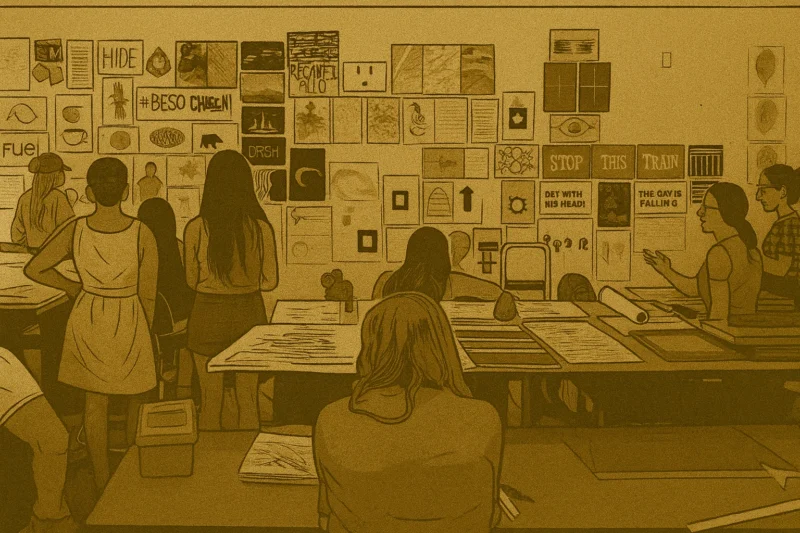A Dent in the Universe: What the Ive-Altman Alliance Means for AI and Product Design

Jony Ive and Sam Altman are building more than a product. Their new company, io, may redefine how we interact with machines. This piece explores what that means for AI, product design, user experience, and the future of accessible innovation.
Introduction: The Shift We Can’t Ignore
In only a few years, AI changed the way we work, design, and collaborate. But something bigger is now happening – something that goes beyond productivity tools and automation.
The formation of io, a collaboration between Jony Ive and Sam Altman, feels like the start of a new kind of computing era. It is not about more features or faster processors. It is about starting over. About asking what a computer should feel like now that we have general-purpose intelligence at our fingertips.
This moment matters. Because it could become the next real dent in the universe.
1. We’ve Already Rebuilt Our Workflows
Since 2022, we have adopted new tools at a pace no one expected. We now design with AI, write with AI, and build prototypes in hours instead of weeks. Our workflows are layered, hybrid, and constantly evolving.
This shift has already changed what it means to be a designer or product builder. And now we are facing a deeper question – not just what we make, but how we interact with what we make.
2. Siri and Alexa Were Just a Start
Voice assistants introduced us to the idea of hands-free technology. But they were not context-aware. They did not grow with you or adapt to your work. They offered commands, not relationships.
Large language models have changed that. Now, we have the ability to speak to machines and be understood, remembered, and assisted in real time. That is not a UX tweak. That is a platform shift.
We are moving into a world where conversation becomes the operating system – and that means the interface itself must evolve.
3. Why the Ive-Altman Alliance Matters
Jony Ive is responsible for the physical tools that defined modern computing. Sam Altman helped unlock the intelligence layer that will define the next phase. Together, they are not tweaking the status quo. They are discarding it.
Their company, io, is building devices from the ground up for a world powered by AI. Not smarter laptops. Not faster phones. Something else. Something more native to how we think and speak.
This is not a trend. It is a foundational realignment of technology and design.
4. UI and UX Are Being Rewritten
The role of user interface design is changing. We are moving from designing surfaces to designing systems of engagement. Instead of controlling fixed screens, users will increasingly interact with responsive, adaptive environments.
This demands a new UX mindset. Interfaces will need to anticipate needs, understand context, and hold meaningful memory. Designers will need to consider tone, language, latency, and trust as first-class design elements.
User experiences will no longer be confined to visual layouts. They will exist across modalities – voice, gesture, gaze, and intent. Every interaction will need to feel less like a tap and more like a conversation.
As a product leader, I see this as the most important design challenge of our time: creating technology that feels less like software and more like a partner.
5. A New Kind of Accessibility
What makes this interface revolutionary is not just its intelligence, but its accessibility. The tools being built through this new design paradigm are not limited to experts. They open the door to people who never considered themselves technical.
When design is driven by natural language and human interaction, the entry barriers begin to fall. You do not need to master design software or code. You just need an idea and the will to express it.
This is not just inclusive design. It is expansive design. It creates opportunities for people to shape tools that reflect their needs, cultures, and stories. That is where the real power of this movement lies – in giving more people the chance to build with technology, not just use it.
A student with an idea. A teacher with a vision. A small business owner trying to scale. When AI tools are conversational, they become available to all – not just those trained in software or design.
This aligns with a larger mission: building technology that serves public good, not just private output. That is the kind of innovation that drives my work and the kind that qualifies as nationally important.
Conclusion: Designing What Comes After
Jony Ive and Sam Altman are not just launching a device. They are rethinking what it means to interact with intelligence. They are creating something that moves beyond tools into presence.
This shift redefines the role of designers and technologists. Our work will no longer center on screens or interfaces, but on shaping how people live with technology. It means building systems that speak, listen, adapt, and earn trust.
For those of us leading digital innovation, this is a generational opportunity. To build tools that empower, not intimidate. To create systems that invite participation, not exclusion.
If this is the next dent in the universe, it will not be carved in metal or glass. It will live in the way we feel when technology finally understands us.








